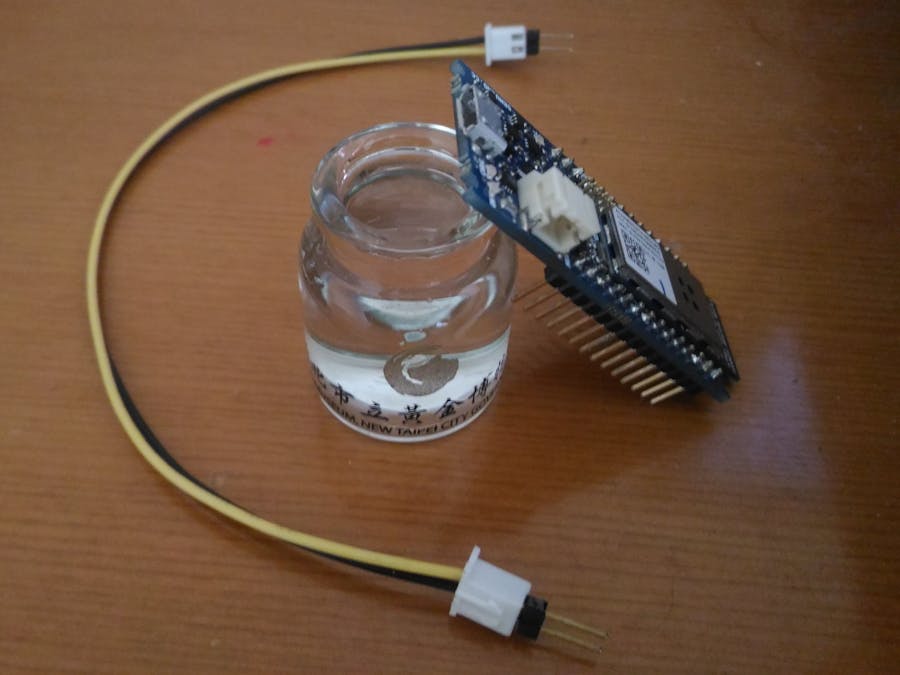After I saw TDS measure circuit I am thinking if it possible use few parts to complete measure.
Here I try as below.
Hardware- Arduino MKR1000 * 1
- 4.7k ohm resistor * 2
- Dupont Line * 3
- 2P 2.54mm connector Line * 1
- 2.54mm gold plated pin 2P * 2
See pictures and caption below.
- Program with Arduino IDE and modify form example "Analog Input"
void loop() {
// start
digitalWrite(ledPin, HIGH);
//port LL
digitalWrite(port1, LOW);
digitalWrite(port2, LOW);
sensorValue1 = analogRead(sensorPin);
delay(delaytime);
//port LH
digitalWrite(port1, LOW);
digitalWrite(port2, HIGH);
sensorValue2 = analogRead(sensorPin);
delay(delaytime);
digitalWrite(ledPin, LOW);
//port HH
digitalWrite(port1, HIGH);
digitalWrite(port2, HIGH);
sensorValue3 = analogRead(sensorPin);
delay(delaytime);
//port HL
digitalWrite(port1, HIGH);
digitalWrite(port2, LOW);
sensorValue4 = analogRead(sensorPin);
delay(delaytime);
Serial.print(sensorValue1);
Serial.print(",");
Serial.print(sensorValue2);
Serial.print(",");
Serial.print(sensorValue3);
Serial.print(",");
Serial.print(sensorValue4);
Serial.println();
}
Here I have one bottle clean water and one bottle non-pure water.
I collected three different data comparisons
1. Gold plated pin is out of water
2. Pin in clean water
3. Pin in non-pure water
When pin in clean water, data is
"159, 434, 874, 601"
"163, 433, 873, 600"
"165, 436, 871, 598"
When pin in non-pure water data is
"159, 462, 876, 566"
"159, 465, 878, 564"
"158, 463, 878, 565"
Here the 1st and 3rd are close at each sample, 2nd and 4th have 25~30 count gap.
It is exactly what I want "can be used to distinguish water quality."
Next step I need a TDS meter as standard reference.
=================================================================
update 2018/5/13Today I increase the number of ADC sampling and use my home's 4 different water test again.
Bottle 1 is RO water.
Bottle 2 is groundwater.
Bottle 3 is tap water.
Bottle 4 is water outdoor.
Test video as below
it seems that RO water ADC value have very different with other.
I also add WiFi-web-server function to show data on explorer.
Here the sensorValue number mean
sensorValue0 port voltage is Low Low
sensorValue1 port voltage is Low High
sensorValue2 port voltage is High High
sensorValue3 port voltage is High Low
But since I change the pin the value order ( 2nd and 4th ) are not the same with first time test.












Comments
Please log in or sign up to comment.